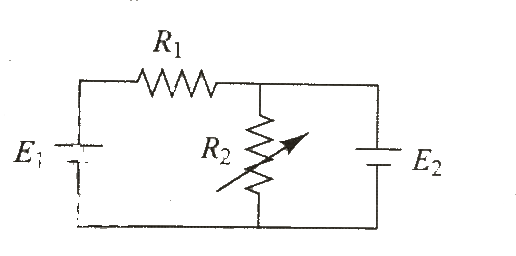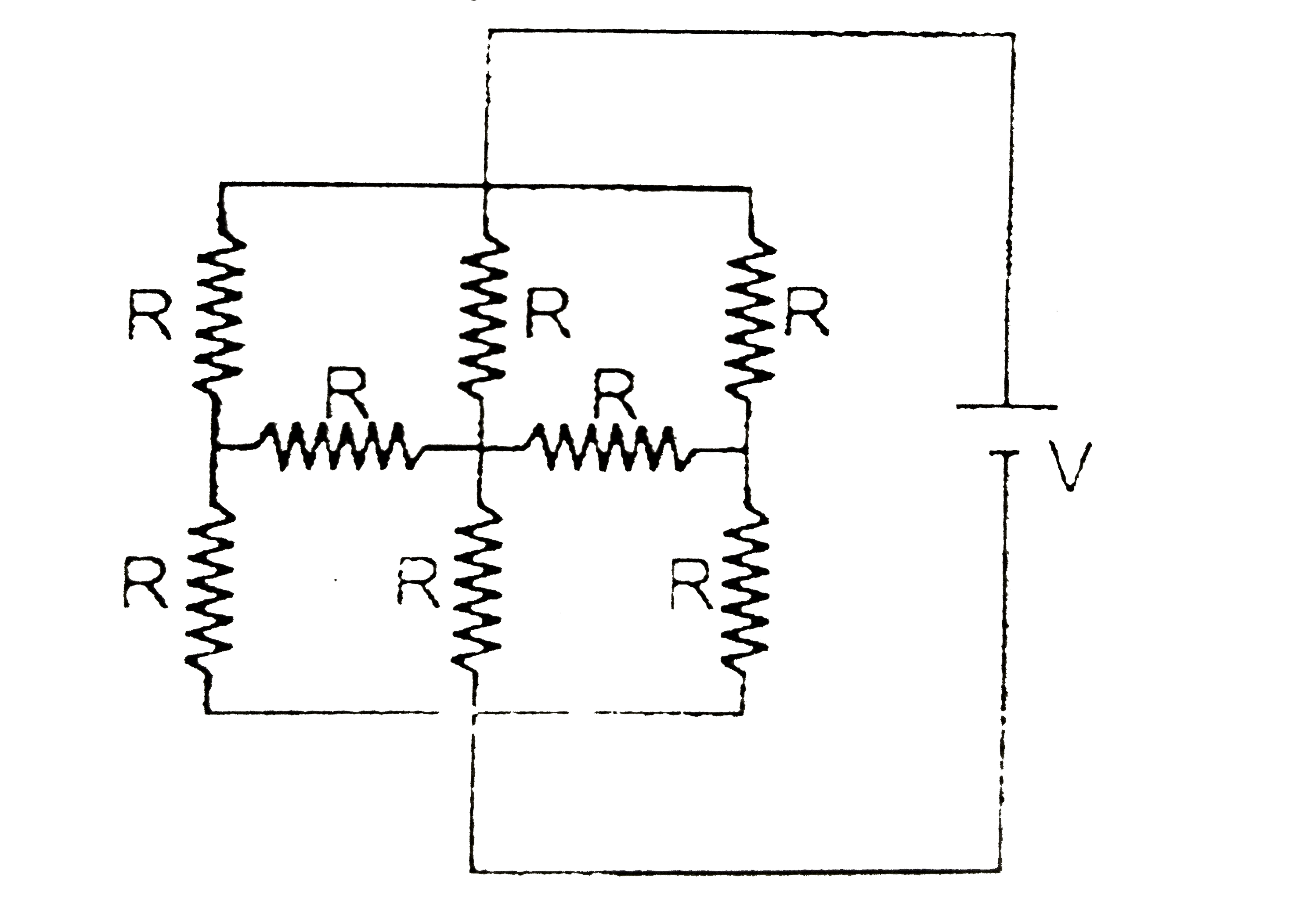To verify Ohm's law, a student is provided with a test resistor , a high resistance . a small resistance , two identical galvometers and and voltage source . The correct circuit to carry out the experiment is.
The correct Answer is:C
To verify Ohm's law using the provided components, we need to set up a circuit that allows us to measure the current through a test resistor and the voltage across it. Here’s a step-by-step solution to create the correct circuit:
1. Identify Components: We have a test resistor RT, a high resistance R1, a small resistance R2, and two galvanometers G1 and G2.
2. Understanding the Role of Galvanometers:
- G1 will be used to measure current, so we need to convert it into an ammeter.
- G2 will be used to measure voltage, so we need to convert it into a voltmeter.
3. Creating an Ammeter:
- To convert G1 into an ammeter, connect the small resistance R2 in parallel with G1. This setup allows most of the current to bypass the galvanometer, protecting it from high current while still allowing it to measure the small current flowing through it.
4. Creating a Voltmeter:
- To convert G2 into a voltmeter, connect the high resistance R1 in series with G2. This configuration ensures that the galvanometer measures the voltage drop across R1 while limiting the current through it.
5. Connecting the Circuit:
- Connect the ammeter setup (i.e., G1 and R2) in series with the test resistor RT.
- Connect the voltmeter setup (i.e., G2 and R1) across the test resistor RT.
- Finally, connect the entire circuit to the voltage source V.
6. Final Circuit Layout:
- The circuit should look like this:
- The voltage source V connects to the series combination of RT and the ammeter (which is G1 and R2).
- The voltmeter (which is G2 and R1) is connected across RT.
- G1 will be used to measure current, so we need to convert it into an ammeter.
- G2 will be used to measure voltage, so we need to convert it into a voltmeter.
- To convert G1 into an ammeter, connect the small resistance R2 in parallel with G1. This setup allows most of the current to bypass the galvanometer, protecting it from high current while still allowing it to measure the small current flowing through it.
- To convert G2 into a voltmeter, connect the high resistance R1 in series with G2. This configuration ensures that the galvanometer measures the voltage drop across R1 while limiting the current through it.
- Connect the ammeter setup (i.e., G1 and R2) in series with the test resistor RT.
- Connect the voltmeter setup (i.e., G2 and R1) across the test resistor RT.
- Finally, connect the entire circuit to the voltage source V.
- The circuit should look like this:
- The voltage source V connects to the series combination of RT and the ammeter (which is G1 and R2).
- The voltmeter (which is G2 and R1) is connected across RT.
Topper's Solved these Questions
- EXPERIMENTSBOOK - DC PANDEY ENGLISHCHAPTER - EXPERIMENTSEXERCISE - Exercise 3.7
3 Videos
- EXPERIMENTSBOOK - DC PANDEY ENGLISHCHAPTER - EXPERIMENTSEXERCISE - Exercise 3.8
3 Videos
- EXPERIMENTSBOOK - DC PANDEY ENGLISHCHAPTER - EXPERIMENTSEXERCISE - Exercise 3.5
2 Videos
- ELECTROSTATICSBOOK - DC PANDEY ENGLISHCHAPTER - ELECTROSTATICSEXERCISE - Integer
17 Videos
- FLUID MECHANICSBOOK - DC PANDEY ENGLISHCHAPTER - FLUID MECHANICSEXERCISE - Medical entranes gallery
49 Videos
Similar Questions
You are provided with one low resistance R1 and one high resistance RH, and two galvanometers. One galvanometer is to be converted to an ammeter and the other to a voltmeter. Show how you will do this with the help of simple, labelled diagrams.
View SolutionTwo resistors of resistance R1 and R2 having R1>R2 are connected in parallel. For equivalent resistance R, the correct statement is
View SolutionTwo resistors of resistance R1 and R2 having R1>R2 are connected in parallel. For equivalent resistance R, the correct statement is
View SolutionConsider two identical galvanometers and two identical resistors with resistance R. If the internal resistance of the galvanometers Rc<R/2, which of the following statement(s) about any one of the galvanometers is (are) true?
View SolutionA cell develops the same power across two resistances R1 and R2 separately. The internal resistance of the cell is
View SolutionA cell develops the same power across two resistances R1 and R2 separately. The internal resistance of the cell is
View SolutionA resistance R1 is connected to a source of constant voltage . On connecting a resistance R2 in series with R1
View SolutionThe circuit has resistors of equal resistance R. The equivalent resistance between A and B, when key is closed is R1 and when key is open is R2. Find the ratio R1andR2 .

View SolutionStatement I : In the circuit in Fig.7.46, both cells are ideal and of fixed emf, the resistor R1 has fixed resistance and the resistance of resistor R2 can be varied ( but R2 is always non zero). Then the electric power delivered to the resistor of resistance R1 is independent of the value of resistance R2.
Statement II: If potential difference across a fixed resistance is unchanged , the poweer delivered to the resistor remains constant.

View SolutionThe circuit shown in the figure above consists of eight resistors, each with resistance R, and a battery with terminal voltage V and negligible internal resistance. The current flowing through the battery is n4VR, then n is

View Solution
